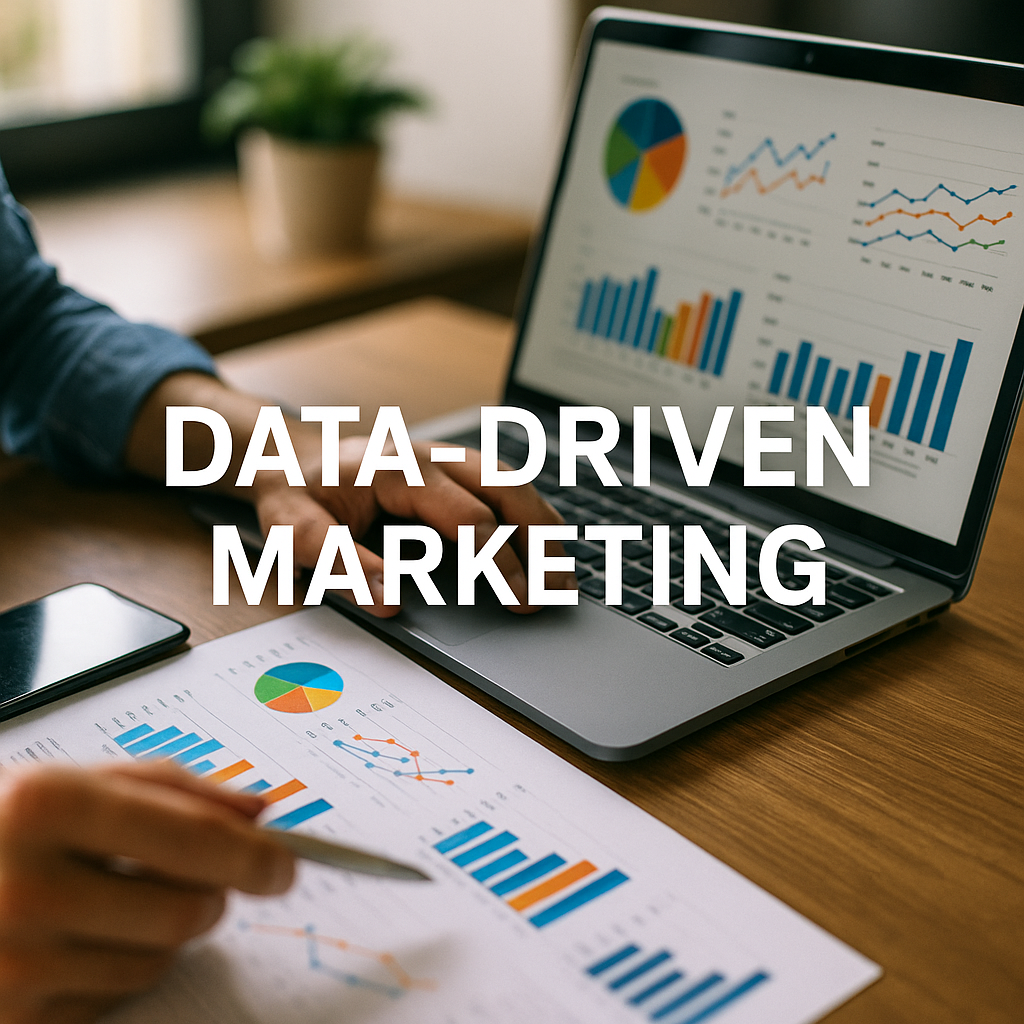Mastering Marketing Analytics: The Role of Business Intelligence in Strategic Growth

In today’s competitive business landscape, data-driven marketing has emerged as a crucial component for strategic growth, transforming how companies understand and engage with their customers. Harnessing the power of business intelligence allows organizations to delve into customer insights, uncovering patterns and preferences that drive effective marketing strategies. As marketing analytics continue to evolve, leveraging data analytics tools becomes indispensable in crafting campaigns that resonate with target audiences. This post will delve into the integral role of business intelligence in shaping informed decisions, exploring how AI in business is revolutionizing the way executives and analysts approach growth. Join us as we navigate the dynamic intersection of data and strategy, unlocking the potential for sustainable success.
Importance of Marketing Analytics
Marketing analytics forms the backbone of modern business strategies, enabling companies to make informed decisions based on data-driven insights. This section explores the fundamental aspects of data-driven marketing, the power of customer insights, and the integration of AI in business practices.
Understanding Data-Driven Marketing
Data-driven marketing leverages customer data and market trends to inform strategic decisions. This approach allows businesses to tailor their marketing efforts with precision and efficiency.
By analyzing customer behavior, preferences, and interactions, companies can create targeted campaigns that resonate with their audience. This targeted approach often leads to higher conversion rates and improved ROI.
Data-driven marketing also enables continuous improvement. By measuring the performance of marketing initiatives, businesses can refine their strategies in real-time, ensuring optimal resource allocation and maximizing impact.
Harnessing Customer Insights
Customer insights are the goldmine of marketing analytics. They provide a deep understanding of consumer behavior, preferences, and pain points, allowing businesses to create more effective marketing strategies.
By leveraging tools like customer surveys, social media analytics, and purchase history analysis, companies can build comprehensive customer profiles. These profiles inform product development, pricing strategies, and personalized marketing campaigns.
Moreover, customer insights enable businesses to anticipate future trends and needs. This foresight allows companies to stay ahead of the competition and maintain a strong market position.
Integrating AI in Business
Artificial Intelligence (AI) is revolutionizing marketing analytics by processing vast amounts of data at unprecedented speeds. AI algorithms can identify patterns and trends that might be invisible to human analysts.
In marketing, AI powers personalization at scale. It can analyze individual customer behaviors and preferences to deliver tailored content, product recommendations, and offers in real-time.
AI also enhances predictive analytics, allowing businesses to forecast market trends, customer churn, and campaign performance with greater accuracy. This predictive power enables proactive decision-making and more efficient resource allocation.
Role of Business Intelligence

Business Intelligence (BI) plays a crucial role in transforming raw data into actionable insights. This section delves into how BI enhances data analytics, drives strategic growth, and explores the tools and techniques that make it possible.
Enhancing Data Analytics
Business Intelligence elevates data analytics by providing a comprehensive framework for data collection, processing, and visualization. It enables organizations to make sense of complex datasets and derive meaningful insights.
BI tools aggregate data from various sources, creating a single source of truth for the entire organization. This consolidation ensures that all departments are working with the same information, fostering alignment and collaboration.
Advanced BI systems offer real-time analytics capabilities, allowing businesses to monitor key performance indicators (KPIs) and respond to market changes swiftly. This agility is crucial in today’s fast-paced business environment.
Strategic Growth Through BI
Business Intelligence is a catalyst for strategic growth, providing decision-makers with the insights needed to identify opportunities and mitigate risks. It enables data-driven decision-making at all levels of the organization.
By analyzing historical data and market trends, BI helps businesses forecast future outcomes and plan accordingly. This foresight is invaluable for resource allocation, expansion planning, and product development.
BI also facilitates performance tracking against strategic goals. It provides clear visualizations and reports that make it easy for executives to assess progress and make necessary adjustments to their strategies.
BI Tools and Techniques
The landscape of BI tools and techniques is diverse, offering solutions for various business needs and levels of technical expertise. Some popular BI tools include:
-
Tableau: Known for its powerful data visualization capabilities
-
Power BI: Microsoft’s comprehensive BI solution
-
Looker: Offers advanced data modeling and analytics
Key BI techniques include:
-
Data Mining: Extracting patterns from large datasets
-
Predictive Analytics: Forecasting future trends based on historical data
-
Data Visualization: Presenting data in graphical or pictorial format
Choosing the right combination of tools and techniques is crucial for maximizing the value of BI in an organization.
Implementing Data-Driven Decisions
Implementing data-driven decisions is a critical step in leveraging the power of marketing analytics and business intelligence. This section outlines the process of developing a marketing strategy based on data, the practical application of business intelligence, and how to overcome common challenges in this journey.
Developing a Marketing Strategy
A data-driven marketing strategy begins with clearly defined objectives aligned with overall business goals. This foundation ensures that all data collection and analysis efforts are purposeful and contribute to the company’s success.
The next step involves identifying relevant data sources and Key Performance Indicators (KPIs) that will measure progress towards these objectives. These may include customer acquisition costs, conversion rates, customer lifetime value, and more.
With objectives and metrics in place, the strategy should outline specific tactics for data collection, analysis, and application. This may involve implementing new tools, training staff, or partnering with data analytics experts.
Leveraging Business Intelligence
Business Intelligence transforms raw data into actionable insights that drive marketing decisions. The process typically involves several key steps:
-
Data Collection: Gathering relevant data from various sources
-
Data Processing: Cleaning and organizing the data for analysis
-
Analysis: Applying statistical methods and BI tools to uncover patterns and trends
-
Visualization: Presenting findings in easy-to-understand formats
-
Action: Implementing changes based on the insights gained
Effective BI implementation requires a culture of data-driven decision-making throughout the organization. Leaders must champion the use of data and encourage teams to base their strategies on solid analytical foundations.
Overcoming Common Challenges
Implementing data-driven decisions often comes with challenges. Some common obstacles include:
-
Data Quality Issues: Ensuring data accuracy and consistency
-
Skills Gap: Lack of analytical expertise within the team
-
Resistance to Change: Overcoming traditional decision-making habits
-
Technology Integration: Aligning new BI tools with existing systems
To overcome these challenges:
-
Invest in data governance practices to maintain data quality
-
Provide ongoing training and development for team members
-
Foster a culture that values data-driven insights
-
Choose scalable BI solutions that integrate well with your tech stack
By addressing these challenges proactively, organizations can smooth the transition to data-driven decision-making and reap the full benefits of their BI investments.
Benefits of BI in Marketing
Business Intelligence offers numerous advantages in the marketing realm, from enhancing customer engagement to providing a competitive edge. This section explores the key benefits of integrating BI into marketing strategies.
Improved Customer Engagement
Business Intelligence enables marketers to understand their customers on a deeper level, leading to more meaningful and personalized engagement. By analyzing customer data, businesses can tailor their communications and offerings to individual preferences.
BI tools can track customer interactions across multiple touchpoints, providing a 360-degree view of the customer journey. This comprehensive understanding allows for more targeted and timely marketing interventions.
Moreover, BI-driven insights can help identify at-risk customers, enabling proactive retention strategies. By predicting customer needs and addressing them before they become issues, businesses can significantly improve customer satisfaction and loyalty.
Predictive Analytics for Growth
Predictive analytics, powered by Business Intelligence, allows marketers to anticipate future trends and customer behaviors. This foresight is invaluable for strategic planning and resource allocation.
By analyzing historical data and market trends, BI tools can forecast:
-
Customer lifetime value
-
Churn probability
-
Product demand
-
Campaign performance
These predictions enable marketers to focus their efforts on high-potential opportunities and optimize their marketing mix for maximum ROI.
Data-Driven Competitive Advantage
In today’s data-rich environment, the ability to extract meaningful insights from information provides a significant competitive advantage. BI equips marketers with the tools to outperform their competitors through data-driven strategies.
Some key competitive advantages include:
-
Faster decision-making based on real-time data
-
More accurate targeting and personalization
-
Efficient resource allocation
-
Continuous improvement through performance analytics
By leveraging BI, marketers can stay ahead of market trends, respond swiftly to changes in consumer behavior, and consistently deliver value to their target audience.
Future of Marketing Analytics
The future of marketing analytics is shaped by rapid technological advancements and evolving consumer behaviors. This section explores emerging trends in Business Intelligence, innovations in AI and data science, and how businesses can prepare for the digital transformation ahead.
Trends in Business Intelligence
Business Intelligence is evolving to meet the growing demands of data-driven organizations. Key trends shaping the future of BI include:
-
Self-Service BI: Empowering non-technical users to perform their own data analysis
-
Cloud-Based BI: Offering scalable and accessible analytics solutions
-
Augmented Analytics: Integrating AI to automate data preparation and insight discovery
-
Real-Time Analytics: Providing instant insights for agile decision-making
These trends are making BI more accessible, powerful, and integral to business operations across all departments, not just IT or data teams.
Innovations in AI and Data Science
Artificial Intelligence and Data Science are pushing the boundaries of what’s possible in marketing analytics. Some exciting innovations include:
-
Natural Language Processing (NLP) for sentiment analysis and customer feedback interpretation
-
Machine Learning algorithms for advanced predictive modeling
-
Computer Vision for visual content analysis and optimization
-
Edge Computing for faster, localized data processing
These technologies are enabling marketers to gain deeper insights, automate complex analyses, and create more personalized customer experiences at scale.
Preparing for Digital Transformation
To thrive in the future of marketing analytics, businesses must embrace digital transformation. This involves:
-
Cultivating a data-driven culture throughout the organization
-
Investing in upskilling and reskilling employees in data literacy and analytics
-
Adopting flexible and scalable technology infrastructure
-
Prioritizing data privacy and ethical data use practices
By preparing for this transformation, businesses can position themselves to leverage the full potential of future marketing analytics technologies and stay competitive in an increasingly data-driven marketplace.
